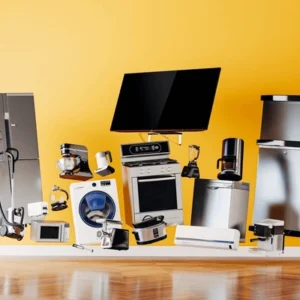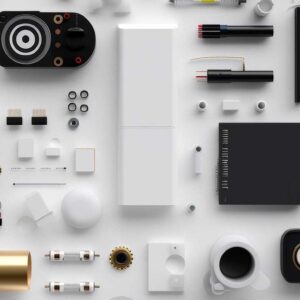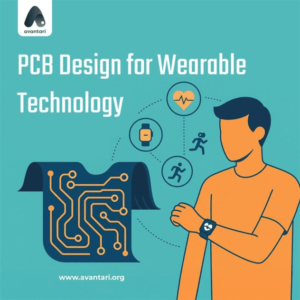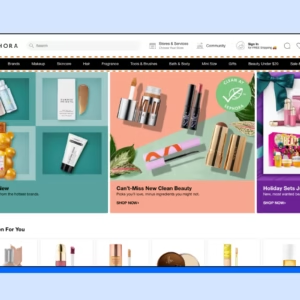In today’s fast-paced digital world, innovation in consumer electronics is not just about technology—it’s about human experience. From smartphones and wearables to smart homes and connected vehicles, the demand for intelligent, user-centric products is higher than ever. Behind these groundbreaking products stand consumer electronics designers, the creative and technical minds who merge engineering precision with design excellence.
Their role goes far beyond creating attractive devices; they craft experiences that simplify lives, enhance usability, and shape the future of technology. In this article, we’ll explore how consumer electronics designers are redefining modern innovation, what skills they bring to the table, and why they’re more important than ever in this era of AI, IoT, and sustainable technology.
Who Are Consumer Electronics Designers?
Consumer electronics designers are professionals who specialize in conceptualizing, designing, and developing electronic products for everyday use. Their work lies at the intersection of technology, creativity, and human psychology. They combine elements of industrial design, electrical engineering, software development, and user experience (UX) to create products that people love to use.
Whether it’s designing the sleek form of a smartphone, the intuitive interface of a smart TV, or the ergonomics of a gaming console, these designers focus on creating products that balance aesthetics, functionality, and performance.
Key Roles and Responsibilities
The job of a consumer electronics designer involves a mix of creativity and technical problem-solving. Here are the major responsibilities they handle:
-
Concept Development:
Designers brainstorm product ideas based on consumer needs, trends, and technological possibilities. -
User-Centered Design:
Every design decision focuses on the end user—how the product feels, looks, and performs in real life. -
Prototyping and Testing:
Designers create physical or digital prototypes to test usability, ergonomics, and performance before final production. -
Collaboration with Engineers:
They work closely with mechanical, electrical, and software engineers to ensure design feasibility and functionality. -
Sustainability Considerations:
Modern designers also focus on using eco-friendly materials and energy-efficient components to reduce environmental impact.
Why Consumer Electronics Designers Are Crucial Today
The global consumer electronics market is growing rapidly, driven by smart technologies, AI integration, and advanced manufacturing. However, technology alone isn’t enough—products must connect emotionally and practically with consumers.
That’s where consumer electronics designers make the difference. Their expertise helps brands:
-
Improve user satisfaction: By designing intuitive, seamless interfaces and ergonomic products.
-
Enhance product appeal: Through innovative aesthetics and materials that attract consumers.
-
Boost functionality: By integrating technology in ways that solve real-world problems.
-
Build brand identity: Good design distinguishes one brand from another in a competitive market.
A perfect example is Apple—its dominance isn’t just because of technology but because of superior design that resonates with users globally.
Trends Shaping the Future of Consumer Electronics Design
The role of consumer electronics designers is constantly evolving with technological advancements and consumer expectations. Here are the top trends shaping the future of this industry:
1. AI and Machine Learning Integration
AI is no longer a back-end function; it’s becoming a core part of design strategy. Designers now collaborate with AI tools to analyze user behavior, predict preferences, and create adaptive interfaces. This allows for highly personalized and responsive products.
2. Internet of Things (IoT) Ecosystems
IoT is connecting every device in our lives, from smart lights to connected refrigerators. Designers must ensure that each product integrates seamlessly into these ecosystems while maintaining usability and reliability.
3. Sustainable Design
Environmental awareness is at the heart of modern design. From recyclable materials to energy-efficient components, consumer electronics designers play a key role in developing sustainable solutions that minimize carbon footprints.
4. Minimalist and Ergonomic Design
Simplicity is the new sophistication. Modern users prefer products that are easy to use, lightweight, and visually clean. Ergonomic shapes and intuitive interfaces make devices more accessible to a broader audience.
5. AR/VR in Product Development
Designers now use Augmented Reality (AR) and Virtual Reality (VR) tools to visualize prototypes in 3D environments. This helps in faster decision-making and more accurate testing before mass production.
Skills Every Successful Consumer Electronics Designer Must Have
To succeed in this competitive field, consumer electronics designers must master a diverse set of skills:
-
Industrial Design Expertise: Understanding shape, color, and material dynamics.
-
Electronics and Engineering Knowledge: Collaborating effectively with hardware teams.
-
3D Modeling and CAD Tools: Using software like SolidWorks or Autodesk Fusion 360 for precise designs.
-
UI/UX Design Skills: Creating user-friendly interfaces for smart devices.
-
Creativity and Problem-Solving: Innovating solutions to user and production challenges.
-
Market Awareness: Staying updated on global trends, user behaviors, and new technologies.
These competencies ensure that their designs are not only beautiful but functional and market-ready.
Challenges Faced by Consumer Electronics Designers
While their work is exciting, consumer electronics designers face several challenges:
-
Rapid Technological Changes: Keeping up with evolving technology requires constant learning.
-
Balancing Aesthetics and Functionality: A beautiful design is meaningless if it doesn’t perform efficiently.
-
Cost Constraints: Designers must innovate within tight budgets to meet consumer price expectations.
-
Sustainability Demands: Adopting green materials while maintaining performance is often complex.
Despite these hurdles, skilled designers overcome limitations with creativity, research, and collaboration.
The Future of Consumer Electronics Designers
The future is incredibly promising for consumer electronics designers. As technology becomes more embedded in daily life, the demand for human-centered design will soar.
Emerging areas like wearable healthcare devices, AI-driven home automation, and smart mobility solutions will rely heavily on design innovation. Designers who understand user psychology, sustainability, and technology integration will lead the next generation of product breakthroughs.
Brands that invest in creative, forward-thinking designers will stay ahead in a market defined by experience rather than just features.
Conclusion
consumer electronics product design are the architects of modern living. Their work transforms complex technologies into simple, delightful, and meaningful experiences that define how we interact with the world.
From smartphones that fit perfectly in our hands to smart speakers that understand our voices, their creativity and technical mastery shape the products that power our daily lives.
As technology continues to evolve, so will the role of these designers—leading the charge toward a future where design, innovation, and humanity meet in perfect harmony.
FAQs
Q1. What does a consumer electronics designer do?
A consumer electronics designer creates and develops electronic products focusing on usability, aesthetics, and performance. They blend design, technology, and user experience to build products consumers love.
Q2. What skills are required for consumer electronics designers?
Key skills include industrial design, CAD modeling, UX/UI design, materials knowledge, and creativity. Understanding electronics and emerging technologies is also crucial.
Q3. How do consumer electronics designers impact innovation?
They drive innovation by merging functionality with human-centered design, ensuring products are not only technologically advanced but also user-friendly and market-ready.
Q4. Are consumer electronics designers in demand?
Yes, the demand is rising due to increasing smart technology adoption, IoT devices, and the need for sustainable, efficient product design.
Q5. What’s the future of consumer electronics design?
The future lies in AI integration, sustainable materials, and connected ecosystems, where designers play a pivotal role in crafting intelligent, intuitive, and eco-friendly products.





